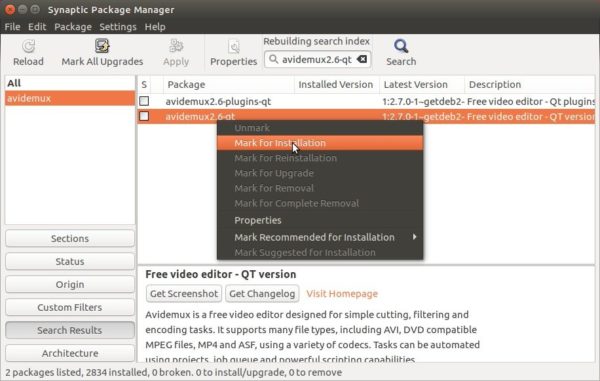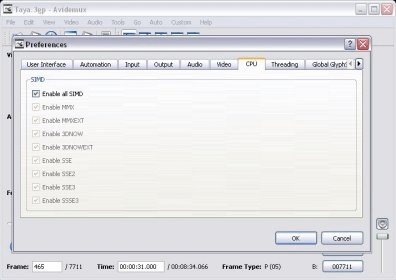

To further reduce the size you might consider changing the video's screen size too - it's all possible with Avidemux. This reduces the file size with little loss in quality. You can preview the picture in before and after snapshots before processing it.Ī common conversion might be from the large MPEG2 files of DVD quality video (stored on the disc as VOB files) to AVI format using the XVID codec. It can’t recreate the parts of the picture obscured by the logo, but it blends it with the adjacent colours in the image, making it a lot less noticeable.

There’s even one you can use to disguise an on screen logo. You can apply basic editing to remove unwanted parts of the video.įilters are available to resize, flip or crop the picture. The program works on the principle of taking a source video file, then selecting the output codecs and size and then applying filters to the output file. It’s a cross-platform clone of the earlier VirtualDub, but, unlike its predecessor, the program is still actively maintained. You also want to consider the quality of your converted video.Īvidemux is a useful application for video conversion and cropping, resizing and processing video. What you need to use depends on the destination device or player and the size of the file. As with audio, video formats contain both container files and codecs, which in layman's terms means that not all video files are equal (two seemingly identical AVI files could actually be very different depending on the codec used in each).
#Avidemux source mp4
mp4 that I have chosen from the Output Format drop down menu down near the bottom right of the Avidemux window.When you need to convert video files there are lots of options.


Next we go to Menu File > Save & be sure to change the file's name from the original & save it where we choose. Once found, go to Menu Edit > Set Marker A, then (unless you want to remove a section & retain another in the video) we slide the video's timeline to the very end (use the cursor control right arrow to be sure that you are at the very end of the video - this often matters) & then we go to Menu Edit > Set Marker B.Īfter that we go to Menu Edit > Cut & now we may have the snippet of video that we have been working to isolate. Now, if we so choose, we can use the timeline bar near the bottom of the Avidemux window to again scroll to as close as we can get to that point in the movie's timeline where the end of the section of video that we want to cut out is situated.Īgain we use the left & right cursor control keys on our keyboard to accurately position the point where we want to set our marker. Once Marker B has been set, we then choose Menu Edit > Cut & as quick as that our Marker B point has now moved to the original position of Marker A. Once there, you can use the curser control arrows on your keyboard to much more slowly & accurately move to the point where you want to set Menu Edit > Set Marker B so that we can mark the end of the section that we want to cut out of the video (this is the method we are using with Avidemux). Next go to the Menu Edit > Set Marker A to indicate that this is the point you want to begin cutting from. If you want to start cutting from the beginning of the video, if should default to that position. So the first thing is to drag the bar that you'll find down near the bottom of the Avidemux screen, through the timeline of the video until you get as close as you can to the start of the part of the video that you want to cut out. Once choosen, the video will take some time (not that long really) to be processed & loaded into Avidemux.Īfter the video is loaded it can then be edited. Open the file you wish to edit in Avidemux using Menu File > Open & then source the video file that you want to start snipping up.


 0 kommentar(er)
0 kommentar(er)
